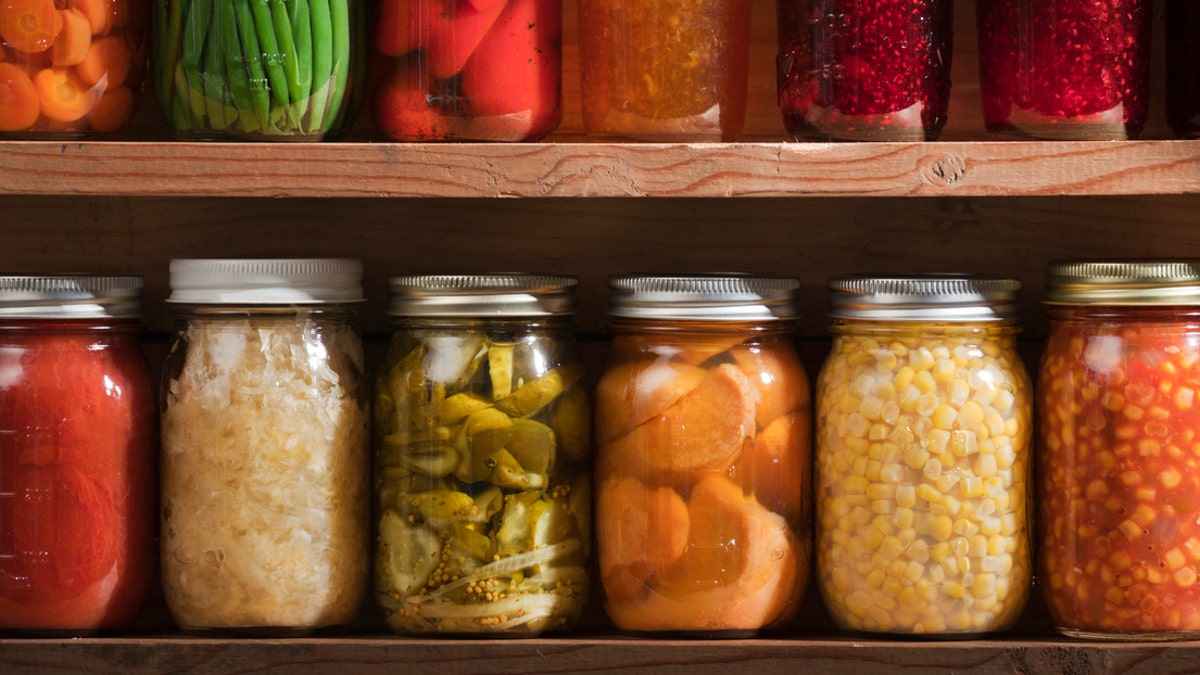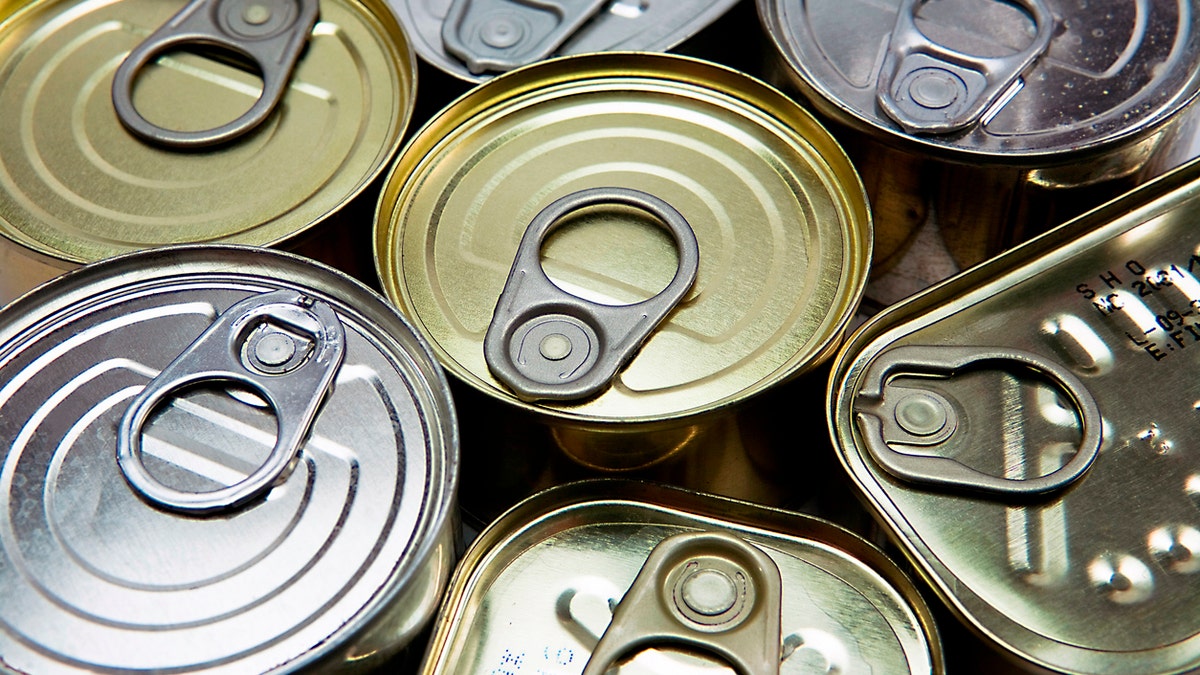Which foods should you stock up on in case of an emergency?
As supermarket shelves are being cleared in fear of the coronavirus, here is a list of items you should stock up on in case of an emergency.
Get all the latest news on coronavirus and more delivered daily to your inbox. Sign up here.
Deborah D. Moore knows a thing or two about prepping her pantry for an extended period of time, having lived most of her life as a “prepper” before there was even a word to describe “prepping.”
“When I was a newlywed, just 19 years old, we lived in Detroit,” explained Moore, the author of “A Prepper’s Cookbook,” in an interview with Fox News. “I heard there was a snow storm coming and we were to stay off the roads … I checked my cupboards and we had a half loaf of bread and two cans of soup.”
WHICH FOODS SHOULD YOU HAVE IN CASE OF AN EMERGENCY?
As Moore told Fox News, she drove to a nearby market to pick up supplies, only to find chaos and enormous check-out lines.
“I vowed that day to never have less than a week of food on hand at all times,” she said. “That was 50 years ago.”
Shortly after that first wake-up call, Moore explained that she began tending a garden, and took up canning and preserving as a way to store her jams and produce. Since that time, she’s become something of an expert on the types of items everyone should have on hand, as well as in their “working” pantry (i.e., short-term pantry) and “retreat” pantry (long-term).
So before you make another run to the grocery store, allow Moore to share a few of her top tips for buying and storing foods for an ideal pantry, as well as ultimately cooking those foods for a family dinner.
How should you start stocking a ‘working’ pantry?
“Everyone has a working pantry; it’s called a cupboard,” says Moore. “Once a person realizes the convenience of having food on hand, they graduate to a closet. I now have a room.”
CLICK HERE TO SIGN UP FOR OUR LIFESTYLE NEWSLETTER
As Moore explained, the first things to think about keeping in a “working” pantry are the foods most commonly consumed within the house.

When stocking up, Deborah D. Moore recommends starting with the things you know your family wants. "Store what you eat; Eat what you store." (iStock)
“A person starts with what they like to eat,” she said. “’Store what you eat; Eat what you store.’ I coined that phrase over 30 years ago, and it still holds true.”
That said, there are several items almost every pantry would benefit from having. In Moore’s opinion, that includes “flour, sugar, salt, yeast, cooking oil, and dry pasta,” the latter of which she calls the “most versatile” food in her pantry. (“It’s cheap and it stores VERY well,” she said.)
“There should be foods ready to eat without cooking like beans, canned meats and fish, soup,” she added “A variety is essential to not getting bored. Add herbs and spices, cheese, jarred garlic, olives, pickles.”
What about a longer-term, ‘retreat’ pantry?

To calculate what should be included in a long-term "retreat" pantry, Moore recommends planning out a one-week menu, and then multiplying that by however many weeks you plan to be isolated. (iStock)
“The biggest difference is the amount and the method of storage,” explained Moore of her retreat — or long-term — pantry. “As an example, in the working pantry one might keep a 5-pound bag of potatoes; in the retreat pantry it would be a couple of boxes of potato flakes or dehydrated slices — shelf-stable food.”
When allocating for a retreat pantry, Moore again explained that it’s best to start with preferred foods, but only if those are shelf-stable, and won’t be expiring for a very, very long time.
FOLLOW US ON FACEBOOK FOR MORE FOX LIFESTYLE NEWS
To calculate what should be included, Moore recommended planning out a one-week menu, and then multiplying that by however many weeks one plans on “retreating.”
“When I lived off-grid for seven years, we wintered in,” she explained. “I needed to have ALL my food supplies on my shelf no later than November 1. It took planning and it took keeping track of what we actually used.”
What are the must-have items people often forget?
In addition to kitchen supplies such as aluminum foil, plastic bags, paper plates, can opener, etc., Moore insisted people stock comfort foods, as long as those too are shelf-stable. “There’s nothing that says normal to me like Jell-O and fruit cocktail!” she said. “And popcorn.”
And as a pet-owner, Moore urged anyone planning a pantry to remember that their furry friends will need plenty of supplies too.
“Please, do not forget your pets,” she said. “My cat has his own storage space.”
Any recommended recipes?
When it comes to crowd-pleasing recipes, Moore has more than a few ideas — which is why she shares over 100 of them in her new cookbook. But while she says pasta dishes and soups are the easiest for novice chefs, she says one of her favorite easy meals is “Chicken in a Nest,” which comes together in a flash.
CLICK HERE FOR FOX NEWS' CORONAVIRUS COVERAGE
Keep reading for the recipe, or check out Moore's website for more information on her books.
Chicken in a Nest
Ingredients:
- 1 can chicken meat, drained
- 1 egg
- ¼ cup bread crumbs
- 1 Tablespoon dried onion (or fresh minced)
- Salt and pepper, to taste
- Pasta (preferably angel hair)
- 1 can mushroom soup
- Grated cheese
- Fresh or dried herbs, such as basil
Directions:
- Mix drained chicken* with salt and pepper to taste. Add one egg and mix; add bread crumbs and dried onions (or fresh minced) and mix well again. Divided into 2-3 patties. Set aside in refrigerator.
- When ready to begin making the dish, start by boiling water for pasta** (preferably angel hair). Cook enough for 2-3 people.
- In a frying pan, begin frying the chicken patties in a little bit of oil. Saute until browned and cooked through.
- While pasta and chicken are cooking, heat a can of mushroom soup (if it’s concentrated soup, add ½ can of water). When hot, add the cooked pasta and toss.
- Divide pasta onto dishes and swirl to make a nest. Set cooked chicken patty in the center; dust with grated cheese, maybe sprinkle with fresh basil. Add any veggie for color.
*Substitute tuna or salmon for the chicken. If using fish, dust with dill instead of basil.
**If not using pasta, cheesy rice can be substituted.

